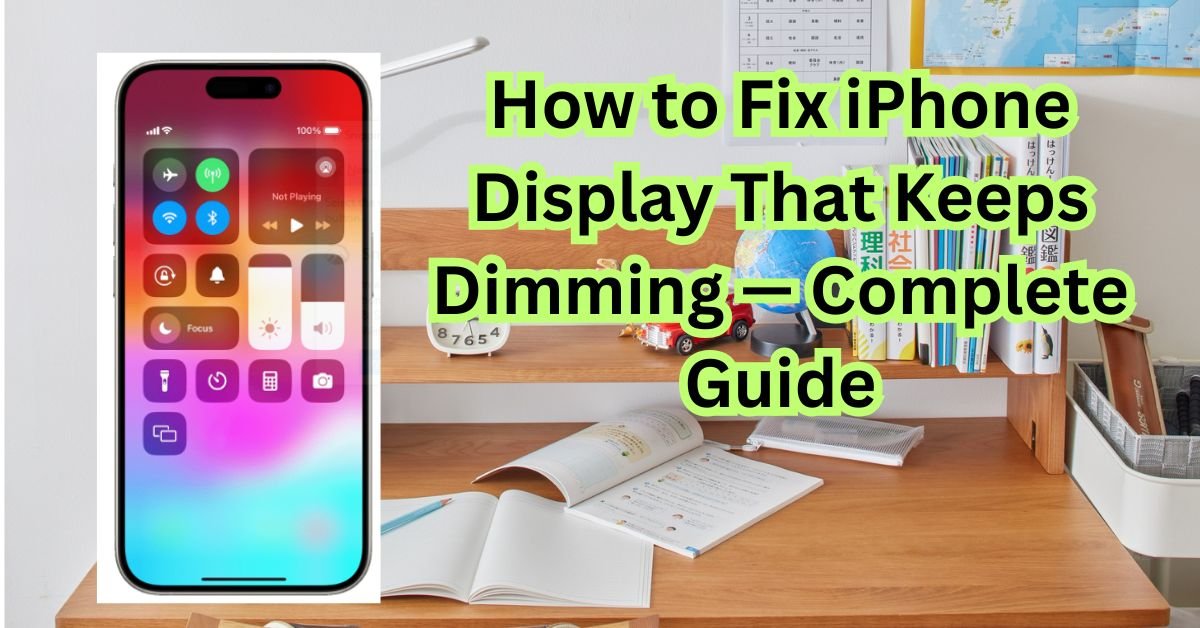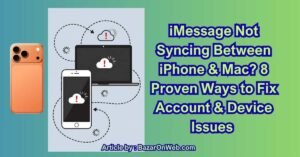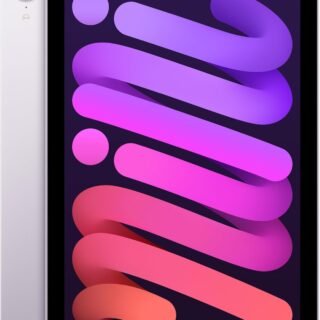Category
Popular Articles
- AI (12)
- Android (38)
- App Suggest (4)
- Apple (15)
- Apple TV (2)
- Bluetooth (3)
- Cars (2)
- ChatGpt (1)
- Chrome (2)
- Did you know? (1)
- E-Commerce News (1)
- Ecommerce Websites business (7)
- Electronics Shopping (5)
- Fashion Tips (3)
- Gaming (4)
- Google Gemini (3)
- Hair Care Tips (2)
- How to (13)
- iCloud (1)
- Infotainment System (1)
- Iphone (101)
- Job Posting (1)
- Lifestyle (3)
- Mac (20)
- Mobile Games (1)
- Netflix (1)
- Online Shopping Websites (2)
- Personal Finance Management (3)
- Product Reviews (3)
- Roku TV (4)
- Samsung (9)
- Shopping Tips (10)
- Spotify (1)
- Tech (93)
- Windows 11 (19)
- Zero Waste (3)
Discounted Products
-
 Leo Creation 144 TC Cotton Double Jaipuri Prints Flat Bedsheet(Pack of 1, Blue, Gree, Red, Grey, Light Grey)
Leo Creation 144 TC Cotton Double Jaipuri Prints Flat Bedsheet(Pack of 1, Blue, Gree, Red, Grey, Light Grey)
₹2,999.00Original price was: ₹2,999.00.₹329.00Current price is: ₹329.00. -
 Home Garage 210 TC Cotton King Floral Fitted (Elastic) Bedsheet(Pack of 1, Grey)
Home Garage 210 TC Cotton King Floral Fitted (Elastic) Bedsheet(Pack of 1, Grey)
₹999.00Original price was: ₹999.00.₹299.00Current price is: ₹299.00. -
 Goodrik 140 TC Cotton Double 3D Printed Flat Bedsheet(Pack of 1, Brown)
Goodrik 140 TC Cotton Double 3D Printed Flat Bedsheet(Pack of 1, Brown)
₹499.00Original price was: ₹499.00.₹229.00Current price is: ₹229.00. -
 GLOBALSHOP 350 TC Microfiber Double Floral Flat Bedsheet(Pack of 1, Multicolor)
GLOBALSHOP 350 TC Microfiber Double Floral Flat Bedsheet(Pack of 1, Multicolor)
₹1,250.00Original price was: ₹1,250.00.₹263.00Current price is: ₹263.00. -
 RisingStar 250 TC Microfiber King Printed Fitted (Elastic) Bedsheet(Pack of 1, FITTED-ROUND-CIRCLES-PREMIUM)
RisingStar 250 TC Microfiber King Printed Fitted (Elastic) Bedsheet(Pack of 1, FITTED-ROUND-CIRCLES-PREMIUM)
₹2,299.00Original price was: ₹2,299.00.₹299.00Current price is: ₹299.00. -
 Home Garage 210 TC Cotton King Floral Fitted (Elastic) Bedsheet(Pack of 1, Fitted Black Green)
Home Garage 210 TC Cotton King Floral Fitted (Elastic) Bedsheet(Pack of 1, Fitted Black Green)
₹1,299.00Original price was: ₹1,299.00.₹299.00Current price is: ₹299.00. -
 Home Garage 180 TC Cotton King 3D Printed Flat Bedsheet(Pack of 1, White)
Home Garage 180 TC Cotton King 3D Printed Flat Bedsheet(Pack of 1, White)
₹999.00Original price was: ₹999.00.₹229.00Current price is: ₹229.00. -
 Home Sizzler 153 cm (5 ft) Polyester Room Darkening Window Curtain (Pack Of 2)(Floral, Maroon)
Home Sizzler 153 cm (5 ft) Polyester Room Darkening Window Curtain (Pack Of 2)(Floral, Maroon)
₹799.00Original price was: ₹799.00.₹299.00Current price is: ₹299.00. -
 Panipat Textile Hub 152.4 cm (5 ft) Polyester Window Curtain (Pack Of 2)(Solid, Aqua)
Panipat Textile Hub 152.4 cm (5 ft) Polyester Window Curtain (Pack Of 2)(Solid, Aqua)
₹1,899.00Original price was: ₹1,899.00.₹299.00Current price is: ₹299.00. -
 Home Sizzler 214 cm (7 ft) Polyester Semi Transparent Door Curtain (Pack Of 2)(Floral, Maroon)
Home Sizzler 214 cm (7 ft) Polyester Semi Transparent Door Curtain (Pack Of 2)(Floral, Maroon)
₹1,199.00Original price was: ₹1,199.00.₹399.00Current price is: ₹399.00. -
 Home Sizzler 153 cm (5 ft) Polyester Room Darkening Window Curtain (Pack Of 2)(Floral, Brown)
Home Sizzler 153 cm (5 ft) Polyester Room Darkening Window Curtain (Pack Of 2)(Floral, Brown)
₹799.00Original price was: ₹799.00.₹299.00Current price is: ₹299.00. -
 Stella Creations 214 cm (7 ft) Polyester Room Darkening Door Curtain (Pack Of 2)(Abstract, Brown)
Stella Creations 214 cm (7 ft) Polyester Room Darkening Door Curtain (Pack Of 2)(Abstract, Brown)
₹1,299.00Original price was: ₹1,299.00.₹449.00Current price is: ₹449.00. -
 Homefab India 152.5 cm (5 ft) Polyester Room Darkening Window Curtain (Pack Of 2)(Floral, Light Blue)
Homefab India 152.5 cm (5 ft) Polyester Room Darkening Window Curtain (Pack Of 2)(Floral, Light Blue)
₹1,199.00Original price was: ₹1,199.00.₹319.00Current price is: ₹319.00. -
 Urban Home 214 cm (7 ft) PVC Transparent Door Curtain Single Curtain(Solid, Off White)
Urban Home 214 cm (7 ft) PVC Transparent Door Curtain Single Curtain(Solid, Off White)
₹699.00Original price was: ₹699.00.₹203.00Current price is: ₹203.00. -
 Panipat Textile Hub 213 cm (7 ft) Polyester Door Curtain (Pack Of 2)(Solid, Brown)
Panipat Textile Hub 213 cm (7 ft) Polyester Door Curtain (Pack Of 2)(Solid, Brown)
₹1,199.00Original price was: ₹1,199.00.₹349.00Current price is: ₹349.00.
Affiliate Links
Promotion

If your iPhone screen keeps dimming even when auto-brightness is turned off, you’re not alone. It’s one of those small but incredibly annoying issues that can make daily phone use frustrating. Whether you’re watching videos, gaming, or just browsing, your screen suddenly gets darker — and you’re left wondering what went wrong.
Hi, I’m Jessica, and in this guide, I’ll walk you through the most common reasons why your iPhone display keeps dimming and exactly how to fix it. By the end, you’ll have a perfectly bright and responsive display that behaves the way you want it to.
1. Why Does the iPhone Screen Keep Dimming?
Before diving into the fixes, let’s understand why this happens. Apple designs iPhones to automatically adjust brightness for energy efficiency, comfort, and battery health. However, sometimes these automatic settings interfere when you prefer a consistently bright display.
Here are the main culprits:
- Auto-Brightness is enabled (adjusts screen brightness based on lighting).
- True Tone and Night Shift alter colors and brightness.
- Attention Aware Features lower brightness when you’re not looking directly at the screen.
- Overheating triggers automatic dimming to protect internal components.
- Low Power Mode limits screen brightness to save battery.
- Display Zoom or Accessibility settings may conflict with brightness controls.
Now that you know what’s behind the dimming, let’s get into the step-by-step fixes.
2. Turn Off Auto-Brightness
Apple enables Auto-Brightness by default to adjust brightness automatically based on ambient light. But if your screen is dimming when you don’t want it to, turning this off usually helps.
Here’s how to do it:
- Open the Settings app.
- Go to Accessibility → Display & Text Size.
- Scroll down and toggle Auto-Brightness off.
Once disabled, you’ll have full control over your display brightness manually.
💡 Tip: Keep your brightness between 40–70% for a balance of clarity and battery efficiency.
3. Check for True Tone and Night Shift
True Tone automatically adjusts your display color temperature based on lighting conditions. Night Shift, on the other hand, makes the display warmer during evenings to reduce eye strain. Both can make your screen look dimmer.
To turn them off:
- Open Settings → Display & Brightness.
- Turn off True Tone.
- Tap Night Shift and set the schedule to Off.
You can also disable these quickly from Control Center by holding the brightness bar and toggling them off.
4. Disable Attention Aware Features
If you own an iPhone with Face ID, Apple includes a feature called Attention Aware Features. It dims your display when the phone thinks you’re not looking at it — for example, when you glance away.
However, sometimes the front camera sensors misinterpret this and cause unwanted dimming.
To turn this off:
- Go to Settings → Face ID & Passcode.
- Enter your passcode.
- Scroll down and turn off Attention Aware Features.
After this, your screen brightness should remain consistent even if you move your eyes or head.
5. Check Low Power Mode
When Low Power Mode is on, your iPhone automatically lowers screen brightness to conserve energy.
Here’s how to disable it:
- Go to Settings → Battery.
- Toggle Low Power Mode off.
You can also do this from Control Center by tapping the battery icon (if it’s yellow, the mode is active).
If your screen immediately brightens after disabling this, you’ve found the cause.
6. Prevent Overheating
iPhones automatically reduce screen brightness when they overheat. It’s a built-in protective measure to prevent hardware damage.
If your iPhone feels hot and the screen suddenly dims, that’s your clue. Here’s how to avoid it:
- Keep your phone out of direct sunlight.
- Remove thick or heat-retaining cases while gaming or charging.
- Avoid intensive apps when the phone is charging.
- Close unused apps running in the background.
Let your iPhone cool down for a few minutes before using it again. Once the temperature drops, brightness will return to normal.
7. Turn Off Adaptive Brightness in Focus Mode
If you’ve set up Focus Modes (like Work, Sleep, or Do Not Disturb), they can sometimes adjust screen brightness automatically.
To check this:
- Open Settings → Focus.
- Choose your active focus mode (like Work or Sleep).
- Review any display-related settings or shortcuts that might reduce brightness.
Disable any automation that modifies screen brightness during Focus Mode.
8. Adjust Auto-Lock Settings
Sometimes it’s not brightness dimming — it’s your iPhone starting to dim the screen before auto-locking.
To extend that time:
- Go to Settings → Display & Brightness.
- Tap Auto-Lock.
- Set it to 2 minutes or Never if you’re working on something and want the screen to stay bright.
9. Check for iOS Updates
Occasionally, a software glitch causes the dimming problem. Apple releases patches regularly to fix such bugs.
To check for updates:
- Go to Settings → General → Software Update.
- Tap Download and Install if a new update is available.
Updating can also improve brightness calibration and reduce power management conflicts.
10. Reset All Settings
If nothing else works, a deeper settings conflict might be at play. Resetting all settings brings your iPhone’s configurations back to default — without deleting your data.
Here’s how:
- Go to Settings → General → Transfer or Reset iPhone.
- Tap Reset → Reset All Settings.
- Enter your passcode to confirm.
This resets brightness, display, and system settings while keeping your apps, photos, and data intact.
11. Bonus Tip: Enable Display Brightness Lock
If you find your brightness keeps changing no matter what, you can lock the brightness level using Guided Access — a hidden accessibility feature.
Here’s how:
- Go to Settings → Accessibility → Guided Access.
- Turn it on and set a passcode.
- Open any app and triple-click the side button.
- Tap Options and disable “Motion” and “Auto-Lock.”
- Start Guided Access.
Your display will now remain at a consistent brightness level until you exit Guided Access.
12. When to Visit Apple Support
If you’ve tried everything and your iPhone display still dims randomly, it might be hardware-related. Possible causes include:
- Failing display sensors.
- Battery health issues.
- Faulty backlight hardware.
- Logic board damage (rare but possible).
Visit an Apple Store or authorized service provider for diagnostics. If your iPhone is under warranty or AppleCare+, screen-related issues might be covered.
13. Final Thoughts
Your iPhone’s dimming issue might seem small, but it can seriously affect usability, especially when you rely on your screen for work or entertainment. Thankfully, most of the time, it’s a simple settings fix — not a hardware problem.
By disabling Auto-Brightness, True Tone, Attention Aware Features, and managing temperature and power settings, you can easily take back control of your display brightness.
If the problem persists, don’t hesitate to get it checked out by Apple. The iPhone’s advanced brightness management is meant to make your experience better — not frustrating — and with the right tweaks, you can enjoy your screen exactly how you want it.
Written by Bazaronweb
Latest Tech Articles
- Steps to Enable Emergency Restart in Windows 11

- 3 Easy Ways to Find Your Laptop Serial Number

- 5 Ways to Backup and Restore Registry Settings in Windows

- iMessage Not Syncing Between iPhone & Mac? 8 Proven Ways to Fix Account & Device Issues

- Outlook Not Receiving Emails? 8 Proven Fixes for Windows, Mac & Mobile

Products
-
![Apple Watch Ultra 3 [GPS + Cellular 49mm] Running & Multisport Smartwatch w/Rugged Titanium Case w/Black Titanium Milanese Loop - M. Satellite Communications, Advanced Health & Fitness Tracking](https://bazaronweb.com/retailstores/wp-content/uploads/2025/09/apple-watch-320x320.jpg) Apple Watch Ultra 3 [GPS + Cellular 49mm] Running & Multisport Smartwatch w/Rugged Titanium Case w/Black Titanium Milanese Loop - M. Satellite Communications, Advanced Health & Fitness Tracking
Apple Watch Ultra 3 [GPS + Cellular 49mm] Running & Multisport Smartwatch w/Rugged Titanium Case w/Black Titanium Milanese Loop - M. Satellite Communications, Advanced Health & Fitness Tracking
-
 Apple iPad mini (A17 Pro): Apple Intelligence, 8.3-inch Liquid Retina Display, 256GB, Wi-Fi 6E, 12MP Front/12MP Back Camera, Touch ID, All-Day Battery Life — Purple
Apple iPad mini (A17 Pro): Apple Intelligence, 8.3-inch Liquid Retina Display, 256GB, Wi-Fi 6E, 12MP Front/12MP Back Camera, Touch ID, All-Day Battery Life — Purple
-
 Apple AirPods Max Wireless Over-Ear Headphones, Active Noise Cancelling, Transparency Mode, Personalized Spatial Audio, Dolby Atmos, Bluetooth Headphones for iPhone – Space Gray
Apple AirPods Max Wireless Over-Ear Headphones, Active Noise Cancelling, Transparency Mode, Personalized Spatial Audio, Dolby Atmos, Bluetooth Headphones for iPhone – Space Gray
-
 Apple AirPods Pro 2 Wireless Earbuds, Active Noise Cancellation, Hearing Aid Feature, Bluetooth Headphones, Transparency, Personalized Spatial Audio, High-Fidelity Sound, H2 Chip, USB-C Charging
Apple AirPods Pro 2 Wireless Earbuds, Active Noise Cancellation, Hearing Aid Feature, Bluetooth Headphones, Transparency, Personalized Spatial Audio, High-Fidelity Sound, H2 Chip, USB-C Charging
-
 Leo Creation 144 TC Cotton Double Jaipuri Prints Flat Bedsheet(Pack of 1, Blue, Gree, Red, Grey, Light Grey)
Leo Creation 144 TC Cotton Double Jaipuri Prints Flat Bedsheet(Pack of 1, Blue, Gree, Red, Grey, Light Grey)
₹2,999.00Original price was: ₹2,999.00.₹329.00Current price is: ₹329.00.
Leave a Reply